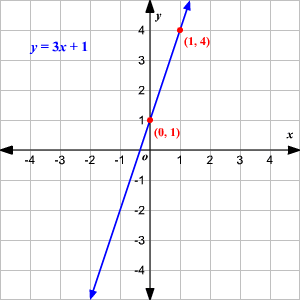A polynomial is a mathematical expression that have
variables,
coefficients and
exponent. Polynomials are sums of these variables, coefficients and exponents. But polynomial does not contain a negative exponent.
An example of polynomial equation is:
x2 - x - 1 = 0
In the word polynomial, poly means 'many' and nomial means 'name' but here it will be used as term. So polynomial means "many terms".
A polynomial in one variable with constant coefficients is given by
anxn + an-1xn-1 +.............. +a2x2 +a1x +a0
where a0, … ,an are constants and x is the variables.
Examples of polynomial:
- 6x
- x - 4
- 3x2 - 5x + 4
- -4y2 - (3/4)x
- 2x5 – 5x3 – 10x + 9
- 6
6 could be considered as polynomial with 1 term. Technically, the term polynomial should only refer to sums of many terms, but the term is used to refer to anything from one term to the sum of a zillion terms. However, the shorter polynomials do have their own names.
A one-term polynomial, such as 5x or 16x2, may also be called a "monomial".
A two-term polynomial, such as 3x + y or x2 – 4, may also be called a "binomial".
A three-term polynomial, such as 2a + b + c or 3x + 5y2 – 3, may also be called a "trinomial".
In the polynomial expression, there should not be any negative exponent (i.e x –2), the variable cannot be in the denominator (i.e 1/x), or any square root of variable. That's why below expression cannot be considered as polynomials:
4xy –2 - because dividing by a variable is not allowed
3/(x+3) - because dividing by a variable is not allowed
1/x - same as above. Variable is in denominator
√x - because square root is not allowed
Degree of terms:
The degree of a term is the sum of the exponents of all the variables in that term.
3x2 - 5x + 4
The above expression has 3 terms. First term has degree 2, second term has degree 1 and third term has no degree or zero degree or can be said constant term.
3yx2 - 2x
Here, the first term has two variables and its degree is 3 because variable 'y' has power 1 and variable 'x' has power 2. So, 1+2=3. The second term has degree 1.
Naming of degree:
| Degree | Name |
Example |
|---|
| 0 |
Constant |
7 |
| 1 |
Linear |
x + 7 |
| 2 |
Quadratic |
x2− x + 2 |
| 3 |
Cubic |
x3 − x2 + 5 |
| 4 |
Quartic |
6x4 − x3 + x − 2 |
| 5 |
Quintic |
x5− 3x3 + x2 + 8 |
The general form of a polynomial shows the terms of all possible degree. Here, for example, is the general form of a polynomial of the third degree:
3x3 + 2x2 + 5x + 8
An equation that is in polynomial form is called Polynomial Equation. Polynomials is used widely in the areas of mathematics and science.
















